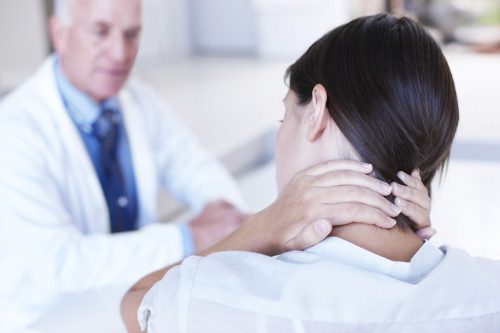The Snap, Crackle, Pops of Aging and Spine Health

About 80% of adults experience low back pain at some point in their lifetime. Both men and women are affected equally. Pain can be abrupt from an injury, or it can develop slowly over time due to age-related changes of the spine.
What are the causes?
The majority of back pain in seniors is mechanical and related to the normal wear and tear on the joints disc and bones of the spinal column. Patients can experience muscle sprain/strain and decrease in core muscles strength of the abdominal and spine muscles from deconditioning as they age. The bones (vertebrae) can lose their density from osteoporosis and be at higher risk for fracture and compression. The disc or cushion shock absorbers between the vertebrae degenerate/ dehydrate and lose their height. With wear and tear there can be changes in spine curvature (scoliosis/kyphosis). There is formation of bone spurs, arthritis and degeneration of normal joint capsules. These changes can cause pinching of the central spinal canal or smaller foramina where the nerves exit the spinal canal. With this, individuals may experience pain down the leg/legs, numbness in the leg or weaknesses, hence the "snap, crackle, pops".
Other medical conditions that may present as back pain include infections of the bones, disc or abdominal/pelvic areas. Tumors or tumors that spread (metastatic) to the spinal space, although less likely, are still a possibility. Abdominal aneurysms and kidney stones are some other possibilities.
Most causes of acute back pain are short-lived and self-limiting. They may require a few days of rest or decrease in level of activity, ice, gentle stretching and possibly over-the-counter medications or anti-inflammatory type medications.
If any red flags exist such as history of cancer, signs of infection, or neurologic deficit such as weakness, numbness or changes in bladder/bowel function a work-up may need to be expedited sooner.
If a patients pain is chronic, or in other words, greater than three months, recurrent, or unrelieved with conservation treatment further testing to identify the cause and possible treatments is often necessary.
What are some tests that may be ordered?
•possibly lab test if concerned of infection, inflammation, arthritis and some genetic markers (if family history ankylosis of spine)
•x-ray to look at bone alignment or for fracture
•CT-computer tomography of spine to evaluate soft tissues and disc not seen on x-ray
•CT myelogram-CT with contrast injected in spinal fluid to look for narrowing/compression on spinal canal or nerve root of spine
•MRI-magnetic resonance imaging used to create a computer-generated image to get a better look at soft tissue structures such as muscles, tendons, vessels, disc tears/ruptures and to evaluate for infections.
•Bone scan - may be used to detect and monitor infection, fracture, or disorder of bone
•EMG/NCV - electro diagnostic study of the muscles and nerves
What can I do?
Just like a yard or house that has not been maintained or has been neglected - a body that is out of shape or deconditioned will need work and maintenance.
•Start SLOW a plan of low-impact exercise such as speed walking, swimming or stationary biking working up to 30 minutes daily can increase muscle strength and flexibility
•Yoga can help stretch and strengthen muscle and improve posture
•Aerobic exercises are good to maintain disc health
•Core strengthening exercises focus to improve strength of abdominal and spinal muscles
•Eat healthy and drink plenty of fluids
•Discuss with your physician need for bone density evaluation (postmenopausal females <65 with risk factors and all women >65 - men may also need testing)
•Get appropriate amount of sleep - sleeping on a firmer mattress may help. Sleeping on side with knees bent may help patient with pinched nerves (radiculopathy) or spinal stenosis get comfortable
•STOP SMOKING - smoking reduces blood flow to the lower spine and contributes to disc degeneration, osteoporosis and delays healing process
•DON’T get discouraged. It is better to start off slow and be dedicated to an exercise program ... than to over do it or be a weekend warrior.
Where do I start?
Florence Neurosurgery and Spine Center offers a comprehensive evaluation and individualized treatment plan of spine disorders. In addition, most of the above test are available in a comfortable office base setting to expedite your care and path to recovery.